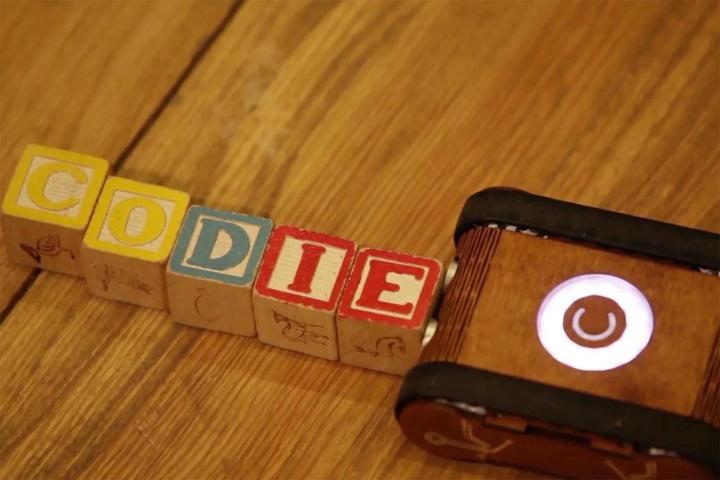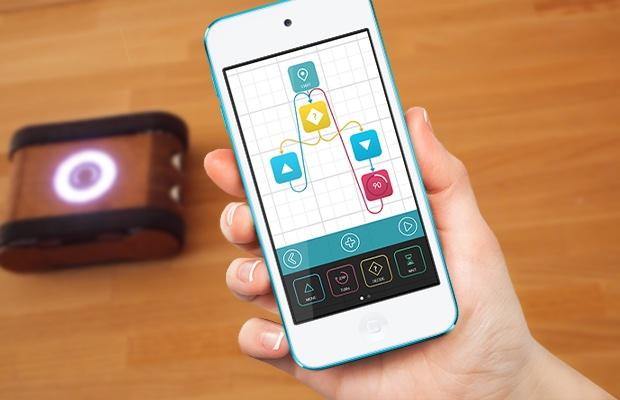
The robot, which starts at $150, has seven built-in sensors: a microphone, temperature sensor, digital compass, ultrasound distance measurement sensor, light sensor, accelerometer and gyroscope, reflected light sensors for line following, and wheel encoders to measure distance. The rechargeable 1,800mAh battery allows for up to four hours of play time, and connectivity is provided using Bluetooth 4.0.
While the hardware is certainly interesting, there are plenty of these types of robots already in production. The team behind Codie is placing most of its chips on its method of programming the robot. Codie uses a visual programming language that allows kids to drag and drop various concepts and commands designed to teach the concepts behind coding without diving into the more confusing semantics of it.
“It should be intuitive, it should get the most out of the touchscreen and it should follow kids’ thinking and imagination. This is the first language developed with these goals in mind,” the team said, speaking to TechCrunch. “We created several custom controls (e.g., when setting the color on the top LED ring, kids don’t have to define it with RGB codes, but they just simply set the color with a visual color ring in the app), and users can create programs without even opening the keyboard.”

After kids familiarize themselves with Codie’s basic concepts, the team plans to let them get their hands on the actual code by turning the Codie programs into JavaScript. “After editing the JS code, they can convert it back to the Codie interface they are already familiar with, and they can examine the changes they made in the JS code,” the team says.
The Indiegogo campaign started on March 31 and at the time of this writing has reached over $30,000 of its $70,000 goal. Early bird Codie models were available to backers in two separate waves for $150, though those have since sold out. A Codie robot can be had for a pledge of $170, while a customizable version is available for $200. For adults interested in tinkering with the hardware, a “hackable” version is available for $300.
The campaign comes to a close on May 15, 2015. See Codie in action below.


